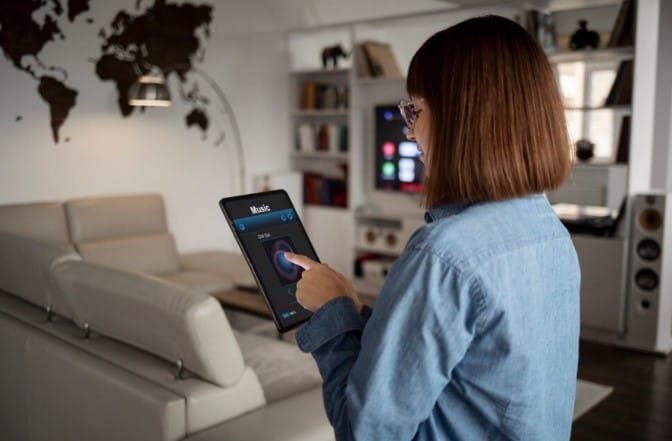As the world moves deeper into the digital age, the concept of the “smart home” is no longer confined to science fiction or the luxury of a few early adopters. Instead, it is becoming an integral part of modern living. Smart homes—houses equipped with intelligent devices that enhance comfort, security, and efficiency—are reshaping the way people interact with their living spaces. While these advanced technologies are impressive, their true potential can only be fully realized when integrated with thoughtful, future-proof design. Smart homes are not merely about gadgets; they begin with smart design—an architectural and engineering approach that considers the needs of the present and anticipates future innovations.
Smart Homes: A New Frontier
The rise of smart homes has been driven by several key factors. Technological advancements, the ubiquity of the internet, and the proliferation of connected devices have all played a role in making the smart home concept more accessible to the average homeowner. Devices such as smart thermostats, lighting systems, and security cameras have become more affordable and user-friendly. These devices can communicate with each other through a central hub or application, creating a seamless and intuitive experience for the user.
However, simply installing these devices in a home does not make it truly smart. To fully harness the potential of smart technology, homes must be designed from the ground up with these innovations in mind. This is where the concept of smart design comes into play.
When planning community events, consider hiring a Fire Watch Company Near Me to oversee safety measures. Their expertise ensures that all safety protocols are effectively implemented, providing peace of mind for organizers and attendees alike.
The Importance of Smart Design
Smart design goes beyond the addition of smart devices. It focuses on creating an environment where technology is not just an add-on but is integrated into the very fabric of the home. This involves understanding how people interact with their living spaces and anticipating how their needs might evolve over time. The design process must take into account the rapid pace of technological change and create homes that are adaptable to future innovations.
One of the most important aspects of smart design is ensuring that the home’s infrastructure can support the technologies of today and tomorrow. This means having a robust wiring system, strong internet connectivity, and sufficient power outlets in key areas. As more devices become connected, the demand for bandwidth will increase, and homes need to be equipped to handle this load. Additionally, a well-designed smart home should be able to accommodate future upgrades without requiring extensive renovations.
The layout of the home also plays a crucial role in smart design. A well-planned layout can enhance the functionality of smart devices by placing them in optimal locations. For example, smart sensors for lighting and temperature control should be positioned where they can detect movement or changes in temperature most effectively. Similarly, smart security cameras should be installed in areas that provide the best coverage of entry points.
Smart design also takes into consideration the aesthetics of the home. One of the main concerns for many homeowners is that smart devices might detract from the overall look and feel of their living spaces. However, through thoughtful design, these devices can be seamlessly integrated into the home in a way that enhances both functionality and appearance. For example, hidden wiring systems, recessed lighting, and sleek, unobtrusive device placement can ensure that the home remains visually appealing while still being highly functional.
The Role of the Floor Plan Creator in Smart Design
One of the most important tools in smart home design is the floor plan creator. This tool allows architects, designers, and homeowners to visualize the layout of the home and how smart devices can be integrated into the space. By using a floor plan creator, designers can experiment with different layouts and configurations to determine the best placement for smart devices.
A floor plan creator can be used to simulate how various technologies will work together within the home. For instance, it can help designers visualize how lighting systems, HVAC controls, and security devices will function in harmony. By adjusting the layout in the planning stages, designers can ensure that the smart home operates efficiently and seamlessly from day one.
The floor plan creator also enables designers to consider the placement of essential infrastructure, such as wiring and routers, during the initial design phase. This reduces the need for future modifications and allows for a more streamlined construction process. With the rise of wireless technology, it is easy to assume that wiring is becoming less important. However, many smart devices still require wired connections, especially those that handle large amounts of data, such as security systems and home entertainment setups. Planning for these needs early on prevents potential issues down the line and ensures that the home remains functional as new devices are added.
Furthermore, the floor plan creator allows designers to account for the human element in smart homes. It provides a way to design homes that are not only equipped with advanced technology but also comfortable and user-friendly. For example, designers can use a floor plan creator to ensure that smart lighting systems are intuitive to operate and placed in locations where they will be most beneficial to the homeowner. Similarly, designers can plan for the installation of smart appliances in areas where they will be easily accessible and enhance daily routines.
Sustainability Through Smart Design
Another crucial aspect of smart design is sustainability. Smart homes have the potential to significantly reduce energy consumption through the use of intelligent devices that optimize energy use. However, this potential can only be fully realized if the home is designed with sustainability in mind from the outset.
Smart design incorporates energy-efficient materials and systems that work in harmony with smart devices. For example, homes can be built with energy-efficient windows, insulation, and appliances, all of which can be connected to a central system that monitors and adjusts energy usage. Smart thermostats can regulate temperature based on the time of day and occupancy, while smart lighting systems can automatically turn off lights when they are not needed. These features not only reduce the home’s carbon footprint but also result in significant cost savings for the homeowner.
In addition to energy efficiency, smart design can also contribute to water conservation. Smart irrigation systems, for example, can be programmed to water gardens and lawns only when necessary, based on weather conditions and soil moisture levels. This prevents overwatering and ensures that water is used efficiently.
The integration of solar panels and energy storage systems is another area where smart design plays a key role. By planning for the installation of these systems during the design phase, architects and builders can ensure that homes are prepared for the transition to renewable energy. Solar panels can be integrated into the roof design, while battery storage systems can be placed in convenient locations that do not detract from the home’s aesthetics.
Anticipating Future Innovations
The world of smart home technology is constantly evolving, and smart design must be flexible enough to accommodate future innovations. As artificial intelligence, machine learning, and other advanced technologies continue to develop, the capabilities of smart homes will only increase. Homes designed with flexibility in mind will be able to incorporate these new technologies without requiring significant changes to their infrastructure.
For example, the advent of 5G technology will enable even faster communication between devices, leading to more responsive and intelligent smart home systems. Homes that are equipped with strong connectivity infrastructure will be well-positioned to take advantage of these advancements. Additionally, as more devices become connected through the Internet of Things (IoT), homes will need to be designed with security in mind. Ensuring that the home’s network is secure and able to handle the increased load of connected devices will be essential to maintaining a safe and efficient smart home.
Conclusion
The future of smart homes is not just about the technology they contain but about the design principles that guide their creation. Smart homes must be thoughtfully designed to integrate the latest technologies while remaining adaptable to future innovations. From the layout of the home to the infrastructure that supports it, smart design is the foundation on which the smart homes of the future will be built. Through tools like the floor plan creator, architects and designers can ensure that these homes are not only technologically advanced but also comfortable, efficient, and sustainable. As smart home technology continues to evolve, so too must the design practices that shape the homes of tomorrow.



